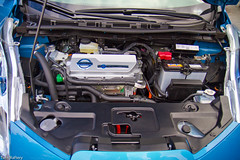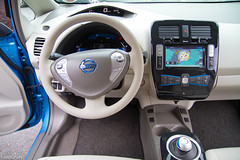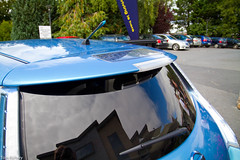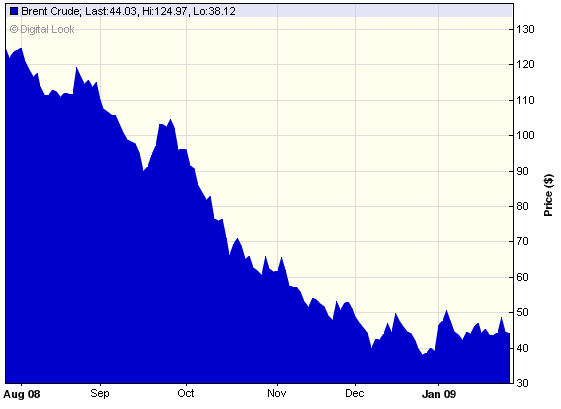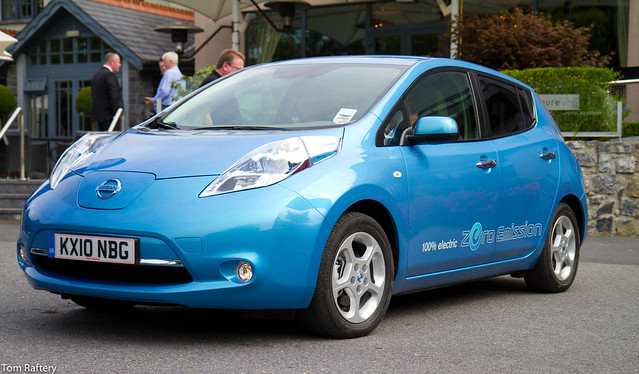
I love the idea of electric cars and have done for a long time.
Recently, one of my best friends Ray Flynn, proprietor of Flynns Garage (a Nissan Dealership in Carlow, Ireland), contacted me to let me know he is one of only 15 Nissan dealerships in Ireland who have been approved to sell the new all-electric Nissan Leaf. As such he had a limited number of slots available for a test drive and he wanted to know if I’d like one of them. I jumped at the chance!
The Leaf is a totally electric car relying completely on its 24 kW?h/90 kW lithium ion battery pack for power. The battery pack is rated to deliver 100 miles on a full charge but this can vary from about 62 miles (100 km) to almost 138 miles (222 km) depending on driving style, load, traffic conditions, weather (i.e. wind, atmospheric density) and accessory use.
The car is a five seater with a spacious interior. It is very responsive to drive. My own car is a 2008 Toyota Prius and this is a much nippier car than the Prius. It handles well on the road and because there are 300kg of batteries under the floor, the car sticks to the road on corners!
Charge time varies on the type of charging (normal or fast) and whether the battery is fully depleted or only partially. Using a standard 220/240 volt 30 amp supply the battery can be fully charged in 8 hours. Fast charging using a 440V level 3 charger charges to 80% in around 20 minutes – these are typically the kinds of chargers you will see deployed in places like McDonalds, Tesco’s and motorway caf?’s I assume.
There is a lot of technology built in to the car. It is connected to a global data center which provides support, information and entertainment at all times. The GPS navigation system delivers a constantly updating display of your range as well as showing all the charging stations on your route and it allows you to book a charging station to ensure that it is available when you arrive.
Mobile phone apps will allow remote turning on of aircon and heating as well as setting charging times to coincide with time of use rates from utilities. The advantage of turning on aircon/heating before getting to the car is to have it pre-heated/cooled while still connected to the mains to save on battery life.
It has a spacious boot and there is an option to get a rear spoiler with solar panels to trickle charge the auxiliary 12 volt battery, though, tbh this feels like a bit of a gimmick!
In terms of the main battery, Nissan has announced that it will warranty the battery pack in the Leaf for 8 years or 100,000 miles after which time Leaf batteries will still hold around 70-80% of their rated capacity. I suspect that there will be a significant market for slightly depleted car batteries at that point for home energy storage to better enable load shifting and smart grid applications.
The car I was driving is a pre-production model. Because the production lines are only now being set-up, this one was hand-made and is insured for a replacement value of ?1.2 million! Consequently I drove it very carefully.
Conclusion: The Nissan Leaf is the future of motoring, no doubt. It is fast, affordable and very cheap to run. And that’s not taking into account at all, the environmental advantages of running a zero emissions car! Sure, there are limitations to having a car with a 100 mile range – most of these will be overcome by the roll-out of networks of fast-charging stations. After this test drive, I have no doubt that when it comes time to replace my Prius, my next car will be all-electric.
The Leaf goes on sale in Ireland in February 2011 at a price of ?29,995 (after a ?5,000 govt subsidy), in the UK in March 2011 for ?28,990 and in the US in December for US$32,780.
And finally, if you are interested in going entirely zero-emissions with your motoring, my buddy Ray (mentioned above) has partnered with a solar panel company and they are able to offer a Nissan Leaf and the solar panels to charge it from. Now that’s serious awesomeness!

